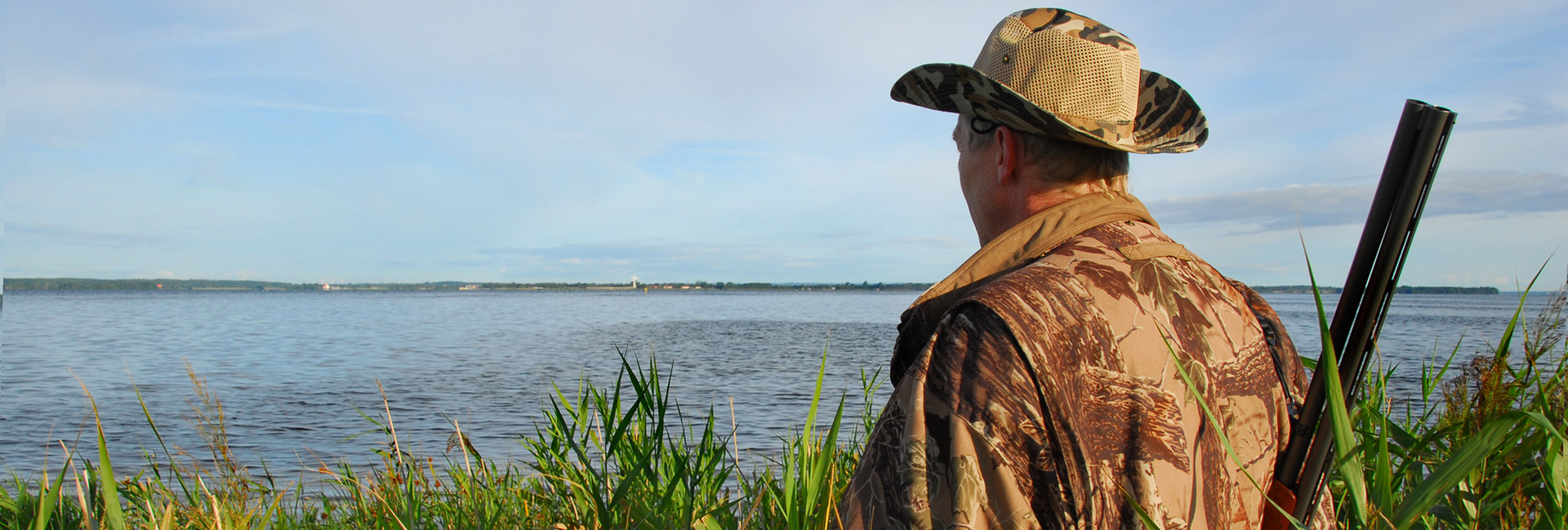
Environmental Risks
PRIMARY RISKS TO BIRDS
There are many factors affecting birds such as habitat loss through intensive agriculture, pollution, climate change and predation. Waterbirds, especially ducks, geese and swans, are also known to mistakenly ingest lead shot as grit in an effort to aid digestion. This then enters the gizzard and the lead pellets are ground down, which makes the lead particles easier to absorb. In some cases, a single lead pellet is enough to cause poisoning for 2-3 weeks leading to death in mallard and some small waders (Bellrose, 1959; Mateo, 2009). The numbers and trends of waterfowl populations at different scales are known to be associated with their ingestion of lead shot (Anderson et al. 2000; Samuel & Bowers 2000; Stevenson et al. 2005; Mateo et al. 2014; Pain et al. 2015; Meyer et al. 2016; Green & Pain 2016, Andreotti et al., 2018).
Studies have also shown that terrestrial huntable birds can also ingest lead shot, including Red grouse (Thomas et al., 2009), Pheasant (Butler et al., 2005), Red-legged Partridge (Butler et at., 2005) and Grey Partridge (Potts, 2005) in the UK, and Red-legged Partridge in Spain (Ferrandis et al., 2008). An assessment in France categorised lowland galliforms as having a “minor to moderate exposure” risk to lead shot (Portier, 2016).
SECONDARY RISKS TO BIRDS
Lead ingestion from ammunition (see also section on ‘Non-lead bullets’) has been reported in various raptors and scavenging species in Europe. Studies show that certain species can ingest lead through eating non-retrieved game or offal containing lead fragments in discarded gut piles. The following recent studies provide more information on the ingestion of lead (from ammunition) in raptors and scavengers in Europe:
- Bonelli’s eagle (Aquila fasciata) south-eastern Spain – Gil-Sanchez et al. (2018)
- Golden eagle in the Swiss Alps – Madry et al. (2015)
- Common Buzzard in south-east Poland – Kitowski et al. (2017)
- Griffon vulture in the Iberian Peninsula – Carneiro et al. (2016)
- Red Kite (Milvus milvus) in England – Molenaar et al. (2017)
- White-tailed Eagle in Finland – Isomursu et al., (2018)
- Griffon Vulture and Red Kites in the Pyrenees – Berny et al. (2015)
- Golden Eagle from northern Sweden – Ecke et al. (2017)
- Common Buzzard in Portugal – Carneiro et al. (2014)
RISK MANAGEMENT OPTIONS: LEAD SHOT
- Adoption of (and compliance with) restrictions on lead shot over wetlands.
- Adoption of proactive information, awareness-raising and best practice campaigns.
- Continued monitoring of both compliance and effect on individual species and populations.
- Using non-lead shot to eliminate risks.
ENVIRONMENTAL RISKS: LEAD BULLETS
For game shot with a rifle using lead bullets, the greatest levels of lead will be in the meat around the wound channel and typically in the heart and lungs. Misplaced shots or shots which hit bones can also result in high levels of lead in the abdominal organs.
Disposal of lead contaminated tissues in the field can result in lead poisoning of avian and mammalian predators and scavengers such as eagles, bears and wild boar, and even hunting dogs. Scavenging birds such as vultures, golden eagles and white-tailed sea eagles are also at risk (Margalida et al., 2008; Hernández and Margalida, 2009; Berny et al., 2015, Isomursu et al., 2018).
RISK MANAGEMENT OPTIONS: BULLETS
- Do not leave gut piles in the field: It is recommended that when field dressing game shot with lead ammunition, the diaphragm is left intact, and that the heart and lungs are disposed of at home, and not fed to pets or left where wild animals can eat them.
- Using non-lead bullets to eliminate risks: Non-lead bullets eliminate any risks to birds from lead in discarded gut piles.
